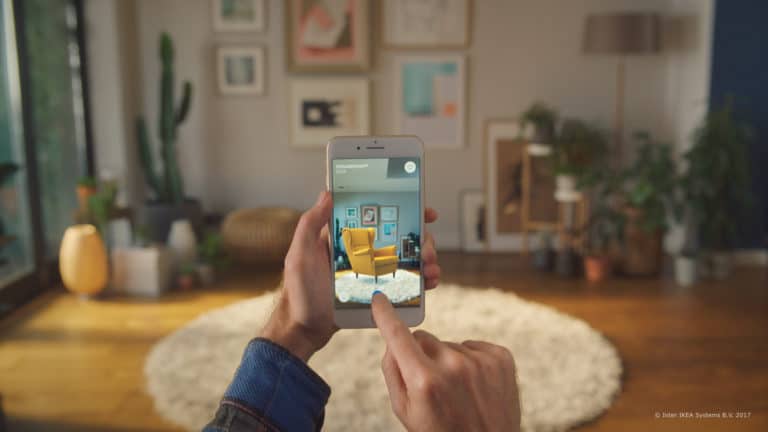
Among the historical lessons for success factors in emerging tech, ‘native thinking’ tops the list. This is the art of developing for the nuances of the form factor rather than shoehorning legacy formats. It’s been an important lesson in past technological shifts.
Early television ads for example often showed someone standing and reading a script for Ovaltine or Lucky Strike (or insert 1940’s quintessence). The reason: that’s the way it was done in radio. It took a while for TV ads to grow into their own skin and develop optimal formats.
Going back further, the telephone was first devised as a way for telegraph operators to talk to each other in real time. But its true utility was eventually realized, thus replacing the medium it was designed to improve (then fittingly reverting back to transmitting “text” communication).
More recently, the smartphone era launched with a flood of dysfunctional apps that replicated websites. And ill-devised ad formats — predominantly banners — persist to this day. It took ten years to come up with truly native ad formats like Snapchat Stories or branded geofilters.
Think Outside the Rectangle
This all leads up to the question of how products will develop in AR & VR. Starting with AR, legacy formats like banner ads will be comically out of place. The 3 dimensional world doesn’t occur in rectangles. And in early days, we’ll see misfires just like we saw with early iPhone apps.
“In 2007 when Apple launched the iPhone, most of the apps were flashlights,” said Escher Reality CTO Diana Hu at TechCrunch Disrupt. “People didn’t know what to do yet. And there’s going to be this phase of learning. There’s a genesis of any technology when people need to experiment.”
The reason this is all important is to not miss the unique opportunities that AR offers. It has the potential to create truly novel search, discovery and social use cases that no one has dreamed of yet. But before we see AR find that native footing, there will be lots of misfires.
“As far as AR apps and consumer-based products, I think you’re going to see a lot of crap over the next year or two,” said Niantic CTO Phil Keslin during the same Disrupt panel. “But you’ll see some nuggets of creative genuine things that will spark something that will truly be amazing.”
Relying once again on historical analysis, the native opportunity is perhaps best characterized by looking at successful mobile apps. And there, we see the most notable examples, such as Uber, carry a common trait: they each wouldn’t have worked on a previous form factor, such as PCs.
“You couldn’t make an Uber style app when it was on a PC,” said Escher Reality CEO Ross Finman on the same panel. “It only made sense after a mobile platform came out. Now it’s about understanding what are the new things you can do with the mobile platform for AR.”

Native VR
As for VR, we could see the same early and ongoing misfires as the medium develops. Sticking with the above example of advertising, this could mean ill-fitting formats like banner ads. Or in video, we’ll see a fair share of legacy formats — like pre-roll ads — shoehorned into VR.
“The impulse in moving from video will be to apply it to VR,” said Framestore VR’s Tyler Hopf in an event ARtillry attended last year. “But applying pre-roll to VR won’t work. People won’t want to be placed inside [an ad]. So we have to figure out ways to create valuable ad experiences.”
And it’s not just the content and ad formats, but importantly their measurement. The same habit creep described above applies to measuring consumption. It’s a wonder that we still use metrics like click through rates in mobile media. VR will adapt similar ill-fitting metrics at first.
And that will be a missed opportunity because of the level of immersion. Issues in the ad world like ad avoidance will themselves be avoided in VR. Impression volumes will be scarce in the near term, but the value of those impressions will be greater, given technologies like eye tracking.
“VR has 100 percent viewability,” said Airpush’s Cameron Peebles at the same event. “In other media like online and broadcast, you can’t measure people truly viewing. [VR] is the first medium where you can validate.” And Google supported this principle by acquiring Eyefluence last fall.
Straight to the Source
Speaking of Google, it recently identified best practices in VR native content development through Daydream usage data. It found that developers should optimize for new consumption patterns like longer session lengths. Unlike mobile’s micromoments, VR is a meal, not a snack.
Based on that finding and other signals, I predict that one form of near-term VR ad success will involve a version of what we now know as content marketing. The real native formats will develop over time, but for now think of immersive experiences that are “brought to you by” a given brand.
But the most native thinking will tap into VR’s immersive ability to emulate consumer products. This gets beyond the traditional toolbox of ad copy or creative and goes straight for the jugular: Demonstrating actual product experiences. And that gets closer to measurable conversions.
“Think of an auto dealer,” said Hopf of a potentially further-off scenario. “There are multiple KPIs to get a user to an experience and visit [the dealership] in the real world. VR can skip those steps and get right to the experience.”
For a deeper dive on AR & VR insights, see ARtillry’s new intelligence subscription, and sign up for the free ARtillry Weekly newsletter.
Disclosure: ARtillry has no financial stake in the companies mentioned in this post, nor received payment for its production. Disclosure and ethics policy can be seen here.
Header image credit: Richard Heathcoat


